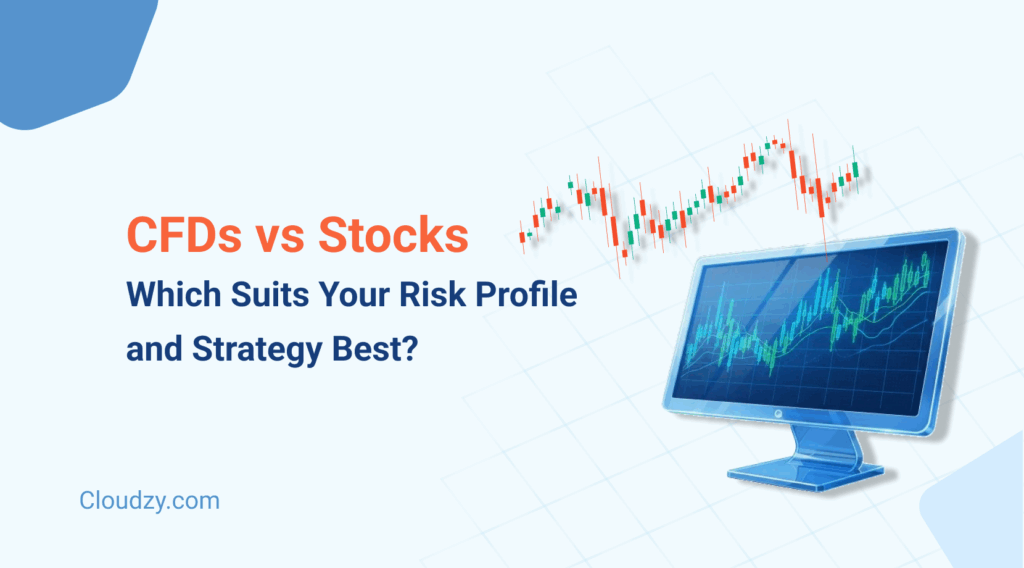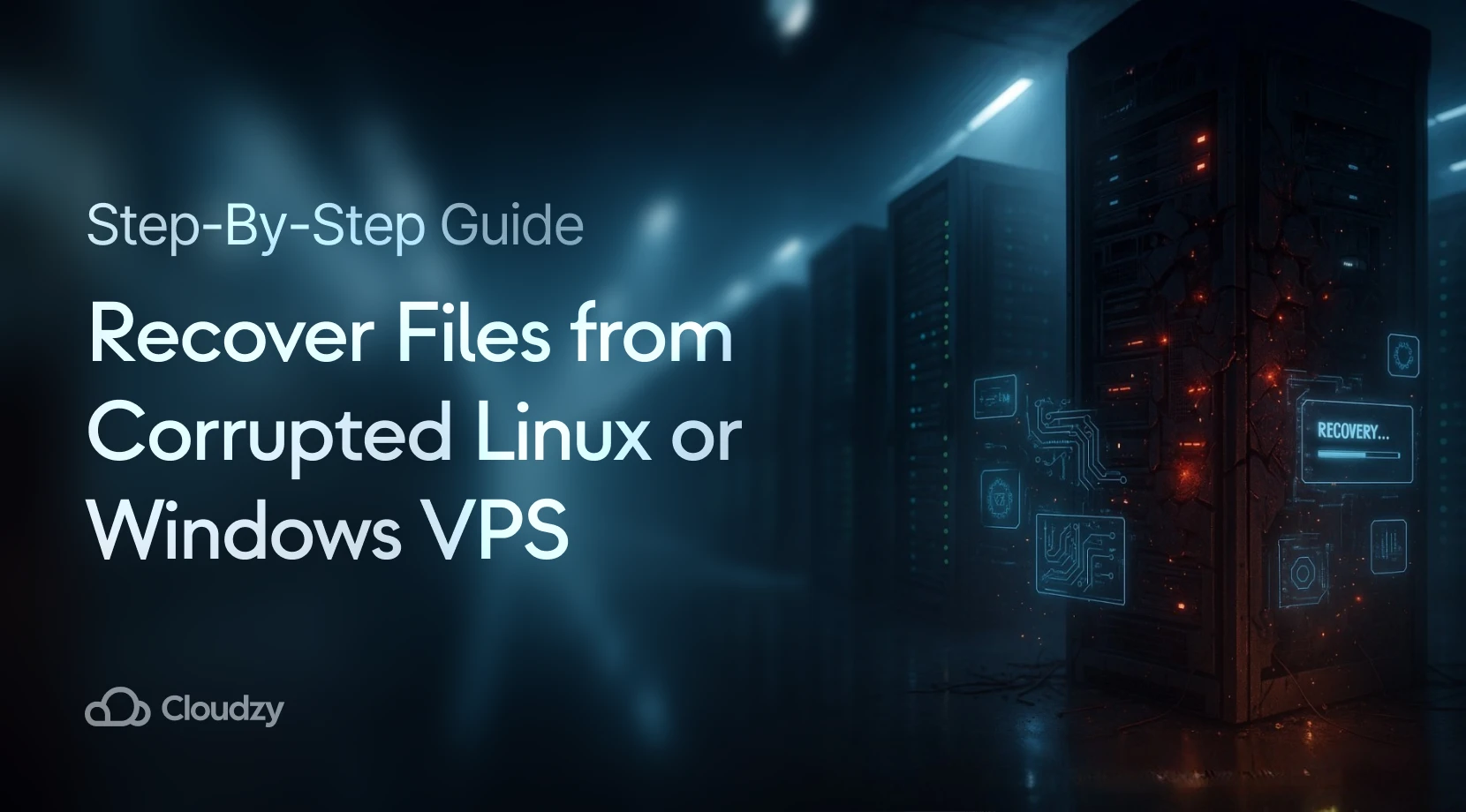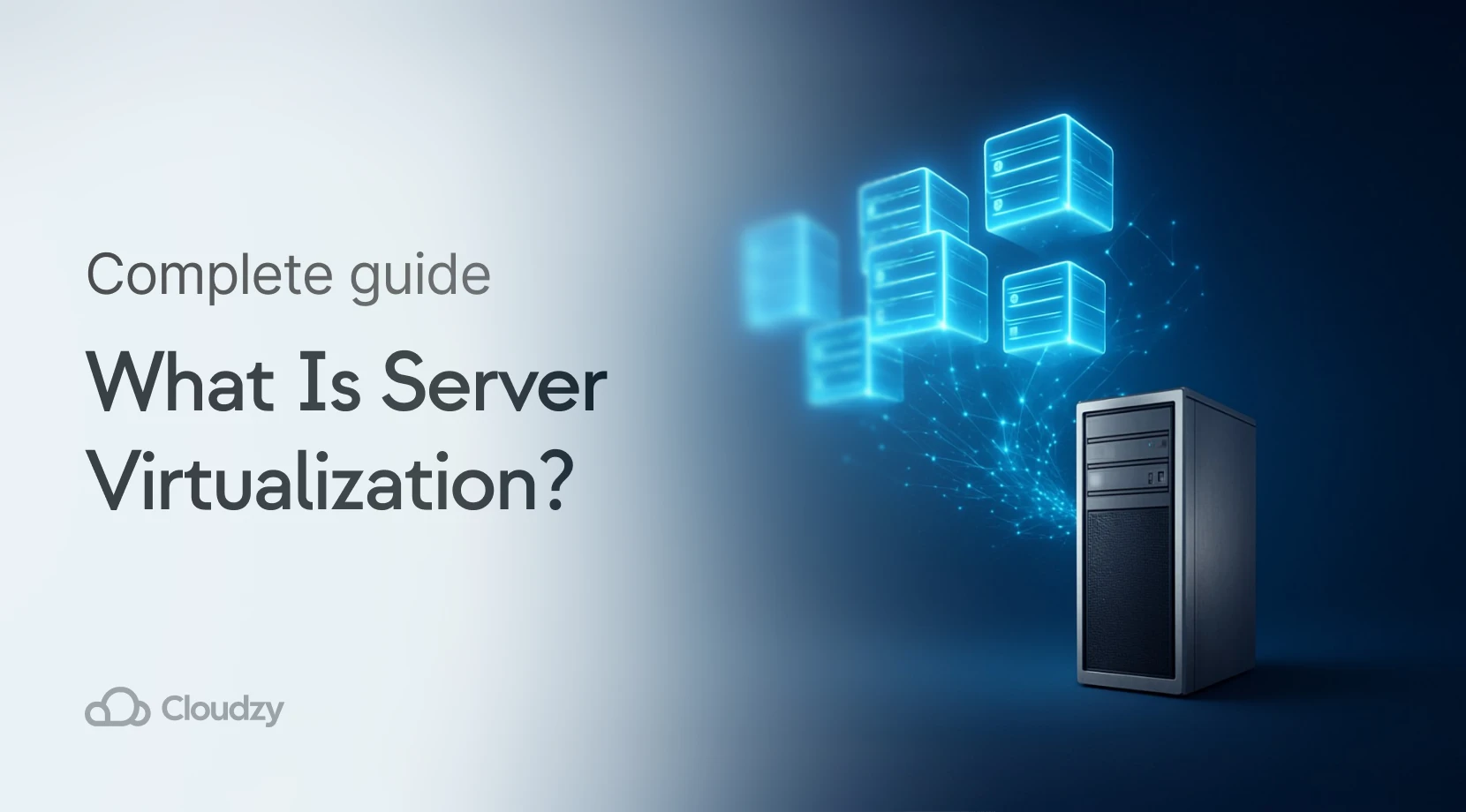The CFDs vs stocks decision depends on your risk tolerance and time horizon. CFDs suit active traders seeking leverage, while stocks work better for long-term wealth building.
Meet Sarah, 29, a marketing professional who lost her side consulting gig during the recent economic uncertainty. She’s got $8,000 saved and wants to build income through trading.
But here’s her dilemma: Should she trade CFDs or buy stocks? Sound familiar? This CFDs vs stocks question haunts thousands of uncertain beginners.
- What Are CFDs? An Expert Breakdown
- What Are Stocks? A Foundational Guide
- How Do CFDs and Stocks Differ in Risk, Ownership & Cost?
- Expert Opinions: When to Avoid CFDs (and When to Use Them)
- Which Is Better for Short-Term vs Long-Term Strategies?
- What Infrastructure Do You Need to Trade CFDs or Stocks Efficiently?
- How to Assess Your Risk Profile Before Choosing
- Conclusion
- FAQ
What Are CFDs? An Expert Breakdown
CFDs let you speculate on price movements without owning the underlying asset. Think of it like betting on a horse race—you don’t own the horse, but you profit if your prediction’s right.
What do you actually own with a CFD? Nothing. You own a contract that tracks an asset’s price movement. No voting rights. No dividend ownership. Just pure price speculation.
Contract for Difference Basics
Here’s the simple truth: CFDs are derivative trading instruments. You’re essentially making a bet with your broker about whether an asset’s price will rise or fall.
If Apple stock moves from $150 to $155, you profit from that $5 difference—but you never owned Apple shares.
CFD Leverage Mechanics
How much leverage is too much? ESMA regulations cap leverage at 30:1 for major currency pairs, with lower ratios for other assets.
With 30:1 leverage, your $1,000 controls $30,000 worth of positions. Sounds exciting? Here’s the catch: losses amplify equally.
A 10% price drop wipes out your entire $1,000 investment. Margin and leverage work like borrowed money. You pay interest on positions held overnight, typically SOFR plus 2-3% since LIBOR was discontinued in 2023.
What Are Stocks? A Foundational Guide
Stocks represent actual ownership in companies. Buy 100 Apple shares, and you own a tiny slice of Apple Inc.
This capital ownership comes with real benefits.
Stock Ownership Benefits
Which is better for passive income? Stocks win here. Shareholders receive dividends, vote on company decisions, and benefit from long-term growth.
When companies prosper, shareholders prosper. Unlike CFDs, stock ownership means you’re backing real businesses with actual revenues, profits, and assets.
Your investment grows with the economy, not just price movements.
How Do CFDs and Stocks Differ in Risk, Ownership & Cost?
The difference between CFDs and stocks boils down to three core areas: risk exposure, what you actually own, and how much you pay.
Risk Profile Comparison
Here’s a sobering reality: 74-89% of retail CFD traders lose money according to ESMA analysis. The market volatility that creates CFD opportunities also destroys accounts.
Are stocks safer in a downturn? Yes, but not always. Stocks fall during bear markets, but they don’t face margin calls or overnight financing charges.
These charges can force liquidation at the worst possible moment.
Cost Structure Analysis
CFD trading costs eat into profits aggressively. You’ll pay 0.1-0.2% commission plus spreads plus overnight financing.
These seemingly small costs compound quickly. Stock trading involves brokerage fees and stamp duty, but no overnight charges.
Hold Apple stock for five years? No additional costs. Hold Apple CFDs for five years? You’ll pay financing charges daily.
Expert Opinions: When to Avoid CFDs (and When to Use Them)
Are CFDs legit or just risky? They’re legitimate financial instruments, but regulatory warnings exist for good reason.
Professional traders use them for hedging and short-term speculation, not wealth building.
CFD Red Flags for Beginners
Over-leveraging destroys accounts. If you’re considering CFDs, never risk more than 2% of your capital per trade.
Most retail traders on platforms like eToro, TradingView, and MetaTrader ignore this rule and pay the price. Exposure limits protect you from yourself.
Start with position sizes that won’t hurt if you lose everything.
When CFDs Make Sense
CFDs work for active traders with solid risk management who need to profit from falling markets. They’re tools, not investments.
Professional day traders use them for quick entries and exits, not long-term positions. For traders developing their skills, advanced CFD trading strategies require discipline and experience, which most beginners lack.
Which Is Better for Short-Term vs Long-Term Strategies?
CFD trading vs stock trading comes down to time horizons and market approach.
Short-Term: CFDs Advantage
Day trading vs investing creates different requirements. CFDs excel for intraday moves where you need leverage and quick execution.
No settlement delays, instant short-selling, and lower capital requirements make them ideal for active strategies. Compare CFDs vs Futures for similar short-term advantages with different cost structures.
Beginners exploring these concepts should consider a comprehensive CFD trading guide for beginners before risking real money.
Long-Term: Stocks Dominate
Stock markets deliver average annual returns of 10% over decades. The S&P 500’s long-term performance crushes CFD speculation.
Compound growth works magic over time. $10,000 invested in stocks earning 10% annually becomes $67,000 in 20 years.
Try that with CFDs while paying overnight financing charges. Stop-loss and take-profit orders help both approaches, but stocks don’t force liquidation through margin calls during temporary market stress.
What Infrastructure Do You Need to Trade CFDs or Stocks Efficiently?
Technology requirements differ significantly between CFD and stock trading. Platform stability affects strategy execution, especially for leveraged positions.
CFD Trading Setup
CFD execution demands low-latency connections and stable platforms. Milliseconds matter when you’re leveraged 10:1. Server downtime during volatile markets can destroy accounts instantly.
Professional CFD traders rely on MT4 VPS solutions for uninterrupted execution. These virtual private servers eliminate connection issues that plague home internet during crucial moments.
For advanced strategies, MT5 VPS hosting provides the computational power needed for complex automated systems and multi-market analysis.
Real-time data feeds cost extra, but they’re essential. Delayed quotes mean missed opportunities or unexpected losses.
Stock Trading Requirements
Stock trading needs basic broker platforms and research tools. No special infrastructure required for buy-and-hold investing.
Most online brokers provide adequate execution for long-term strategies. Portfolio tracking software helps monitor dividend payments and rebalancing needs over time.
How to Assess Your Risk Profile Before Choosing
Self-assessment determines whether CFDs vs stocks suit your personality and financial situation. Uncertain beginners often overestimate their risk tolerance.
Conservative Profile: Start with Stocks
Capital preservation should be your priority if you’re building wealth slowly. Stocks offer growth without the leverage risks that can wipe out accounts overnight.
Long-term investors benefit from dollar-cost averaging and dividend reinvestment plans that smooth market volatility over time.
Aggressive Profile: CFDs with Caution
Risk tolerance for CFDs requires active management commitment. You can’t buy and forget.
Positions demand daily attention, especially leveraged ones. Before advancing to CFDs, understand alternatives like CFDs vs options comparison to ensure you’re choosing the right derivative instrument.
Conclusion
CFDs vs stocks isn’t about which is better—it’s about matching instruments to your goals. CFDs reward active traders who understand leverage and risk management.
Stocks build wealth for patient investors who want ownership stakes in growing companies. Financial regulation continues to tighten around CFDs because retail traders consistently lose money.
If you’re uncertain about your risk tolerance, start with stocks. For serious CFD traders using platforms like MT4 or MT5, reliable infrastructure becomes crucial.
While not essential for every trader, many professionals rely on VPS solutions for smoother, uninterrupted execution, especially when using automated tools or trading across time zones.




2 thoughts on “CFDs vs Stocks: Which Suits Your Risk Profile and Strategy Best?”
ThisCFDs vs Stocks Comment is a solid breakdown of the core differences between CFDs and stocks. One thing I’d add is that beginners often underestimate the psychological pressure that comes with leveraged CFD trading—it’s not just about strategy, but also emotional control. Sarah’s situation highlights how important it is to align your investment approach with both your risk tolerance and your lifestyle flexibility.
I enjoy reading through an article that can make men and women think.
Also, many thanks for allowing me to comment!